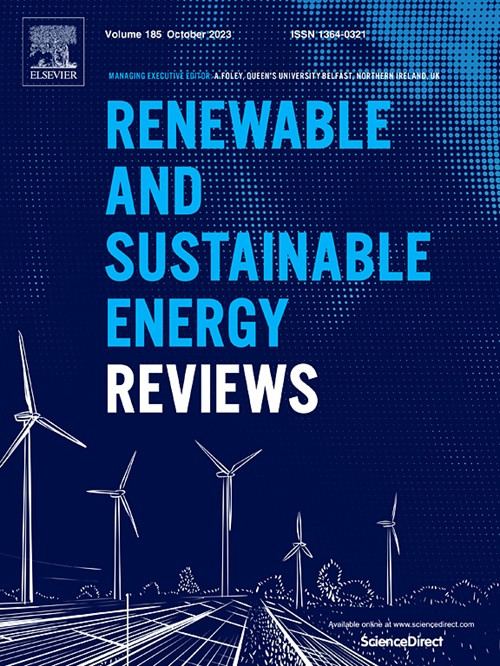非道路小型火花点火发动机排放特性及缓解策略综述
IF 16.3
1区 工程技术
Q1 ENERGY & FUELS
引用次数: 0
摘要
尽管全球向电气化转变,非道路小型火花点火(SI)发动机仍然是园林设备、农业机械和发电机组的主要动力源。然而,它们在丰富的空气-燃料混合物中运行会带来重大的排放挑战。这篇全面的综述系统地涵盖了小型SI发动机的排放特性、法规和可用的控制技术。目前的分析表明,这些发动机表现出不同的排放特征,其特征是碳氢化合物(HC)和二氧化碳(CO)排放量升高,以及适度的氮氧化物(NOx)水平。在各种运行参数和结构参数中,过剩空气系数是影响排放性能的最关键因素。该审查确定了几种有希望的缓解战略。尽管酒精-汽油混合物对氮氧化物排放的影响仍不稳定,但其可持续减少HC和CO排放30 - 40%。相比之下,电子燃油喷射(EFI)系统的性能优于化油器,可提高混合气质量,并将HC和CO排放量减少50 - 70%。此外,将二次空气喷射(SAI)与氧化催化剂相结合,可将HC和CO排放量减少66% - 88%,而三元催化转化器(twc)可将HC和CO排放量减少90%,HC + NOx排放量减少75%。虽然汽车领域的许多排放控制技术显示出了适应的潜力,但在小型SI发动机中实施这些技术必须考虑与成本效益和空间限制相关的关键制约因素。本综述为理解和解决小型SI发动机的减排挑战建立了一个系统框架,为该领域的研究人员、制造商和政策制定者提供了有价值的见解。本文章由计算机程序翻译,如有差异,请以英文原文为准。
A comprehensive review of emission characteristics and mitigation strategies for non-road small spark-ignition engines
Despite the global shift toward electrification, non-road small spark-ignition (SI) engines continue to dominate as primary power sources for garden equipment, agricultural machinery and generator sets. However, their operation with the rich air-fuel mixture leads to significant emission challenges. This comprehensive review systematically covers the emission characteristics, regulations and available control technologies for small SI engines. Current analyses indicate that these engines exhibit distinct emission profiles, characterized by elevated hydrocarbon (HC) and carbon oxide (CO) emissions, along with moderate nitrogen oxide (NOx) level. Among various operating and structural parameters, the excess air coefficient is identified as the most critical factor governing emission performance. The review identifies several promising mitigation strategies. Alcohol-gasoline blends consistently reduce HC and CO emissions by 30–40 %, although their impact on NOx emissions remains variable. In contrast, electronic fuel injection (EFI) systems outperform carburetors, improving mixture quality and reducing HC and CO emissions by 50–70 %. Furthermore, the integration of secondary air injection (SAI) with oxidation catalysts reduces HC and CO emissions by 66–88 %, whereas three-way catalytic converters (TWCs) achieve up to 90 % reductions in HC and CO and 75 % in HC + NOx. While many emission control technologies from automotive applications show potential for adaptation, their implementation in small SI engines must consider critical constraints related to cost-effectiveness and spatial limitations. This review establishes a systematic framework for understanding and addressing emission reduction challenges in small SI engines, providing valuable insights for researchers, manufacturers and policymakers in the field.
求助全文
通过发布文献求助,成功后即可免费获取论文全文。
去求助
来源期刊

Renewable and Sustainable Energy Reviews
工程技术-能源与燃料
CiteScore
31.20
自引率
5.70%
发文量
1055
审稿时长
62 days
期刊介绍:
The mission of Renewable and Sustainable Energy Reviews is to disseminate the most compelling and pertinent critical insights in renewable and sustainable energy, fostering collaboration among the research community, private sector, and policy and decision makers. The journal aims to exchange challenges, solutions, innovative concepts, and technologies, contributing to sustainable development, the transition to a low-carbon future, and the attainment of emissions targets outlined by the United Nations Framework Convention on Climate Change.
Renewable and Sustainable Energy Reviews publishes a diverse range of content, including review papers, original research, case studies, and analyses of new technologies, all featuring a substantial review component such as critique, comparison, or analysis. Introducing a distinctive paper type, Expert Insights, the journal presents commissioned mini-reviews authored by field leaders, addressing topics of significant interest. Case studies undergo consideration only if they showcase the work's applicability to other regions or contribute valuable insights to the broader field of renewable and sustainable energy. Notably, a bibliographic or literature review lacking critical analysis is deemed unsuitable for publication.
 求助内容:
求助内容: 应助结果提醒方式:
应助结果提醒方式:


